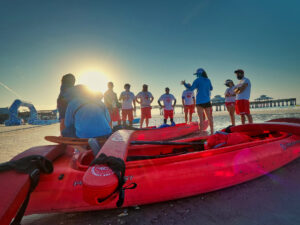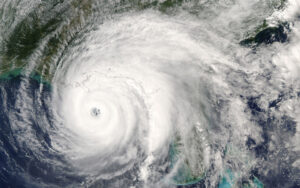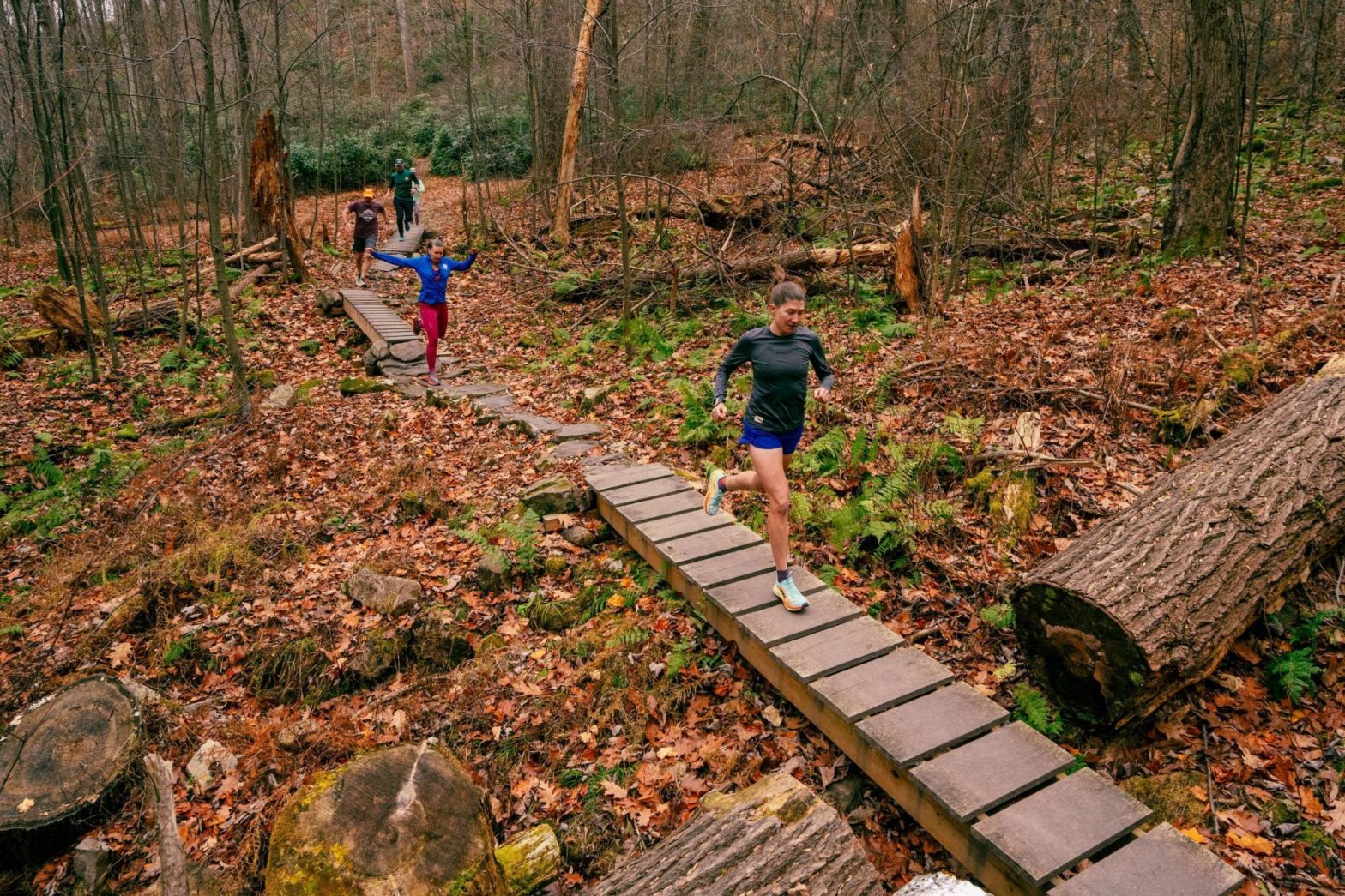Early discoveries attribute the art of swimming to Egypt around 2500 B.C. E. Little did the first swimmers know, swimming would soon take over the world. In the 17th century according to the Encyclopedia Britannica, swimming in Japan was added to required educational courses as physical support for martial arts training. In 1896, swimming became one of the first sports added to the Olympic Games and has remained since. In fact, swimming, alongside cycling, running, fencing, and gymnastics.
While there was only one type of swimming established during its early origins known as the current breaststroke— several different types and styles have come to fruition in recent centuries including the backstroke, the crawl, the butterfly, and a combination of the styles known as the free. Aside from competitive swimming, there is another facet that entails near flawless swim and water techniques.

Lifesaving has been around since the early 1900s when a man by the name of George Douglas Freeth founded the first lifesaving class in 1908. The training took to individuals like water—no pun intended—and soon thereafter in 1914, the American Red Cross established the first lifesaving group training in America.
Lifesaving vs. Lifeguarding
After a while, two groups formed with similar backgrounds but different “official” titles. The title of lifeguard was given to paid professionals who patrol bodies of water including but not limited to beaches, pools, and rivers. Lifesavers do the same but are often saving on a volunteer basis.
In the fall of 1989, a man named David Hasselhoff and a woman named Pamela Anderson graced television screens worldwide donning red uniforms and inflatable rafts. Little did people know; Baywatch would soon become a worldwide classic and cement itself in lifeguarding forever.
However, while entertaining, certified lifeguards and savers do more than the show would entail. Lifeguards are now being hired to patrol open water competitions all over the country including but not limited to swimming, surfing, skiing, wakeboarding, and even lifesaving competitions where participants rescue a dummy from open water. Hiring a lifeguard—or several—are a necessity when planning an open water event. Not only are they present to identify when an individual needs saving, but they can help identify dangerous rip currents in the water before the start of a competition increasing the overall safety level of participants.
Open Water Safety
Bryce Elser, the national team director for open water swimming with Team USA who often plans tournaments involving 500 or more athletes says, “safety is all about anticipation and communication. Event safety directors should try to anticipate potential safety issues and plan for them accordingly. Additionally, safety plans should be communicated with all parties in advance of the competition and constant communication should be maintained throughout the event to help maintain the constant monitoring of the swimmers.”

Matthew Dunn, co-founder of Salty Sports Society also says that “you can never have enough water safety personnel. We use a combination of boats, jet skis, kayakers, and paddle boarders. All watercraft operators should have waterproof radios to stay in contact with one another and race management on the beach. Adjacent to the finish line we always have athletic trainers and/or EMTs ready on standby for any incident. Water safety plans are our number one priority during any event planning effort, as there is an inherent risk that comes along with the sport. These plans need to be reviewed with the entire race team, including water safety. Our athletes must know that they are in capable, safe hands to handle any issues, big or small, that may arise.”
Steven Munatones, the CEO and founder of World Open Water Swimming Association (WOWSA), adds on to Elser and states “constant diligence is required because the conditions in dynamic open bodies of water can quickly change any time—and so can the wellbeing of swimmers in the open water. Logistics are also a very important part when it comes to obtaining water authorities, sponsors, volunteers, and more. Operations must also cover contingency plans that include lightning, sharks, jellyfish, fog, cardiac issues by swimmers, escort boat problems, inexperienced swimmers, and more.”
In a country where nearly 11 people drown each day due to lack of safety precautions, obtaining a lifeguard for an open water competition is a top-of-the-list “to-do.”

Dunn says, “rising numbers of drownings are being reported in lakes, rivers, backyard pools, and other bodies of inland and coastal waters across the United States, amid factors such as early season severe heatwaves, children missing swimming lessons during the pandemic, riskier behavior such as swimming alone and drinking alcohol, and overestimating ability to swim, especially when a variety of factors are at play.”
Elser states, “we have some amazing race directors within USA Swimming who are all dedicated to providing a safe and enjoyable experience for our athletes. I believe that our sanction process helps prevent mistakes because the race plan is reviewed by multiple independent parties before gaining the sanction approval from USA Swimming.”
According to Munatones, “swimming is simply not taught to many Americans. Swimming is a learned art. I estimate that only around three percent of Americans can swim more than 500 meters in an open body of water. Many Americans cannot swim themselves to safety, and many Americans cannot rescue others who are in trouble in the open water. Eyes-on-the-swimmer is an open water swimming safety concept that is the goal of race directors. But, keeping an eye out for every swimmer throughout the entire racecourse is an impossibility. Learning how to optimize the utilization of lifeguards and safety personnel both on the water and on dryland is a key organizational and operational knowledge/skill that improves with more and more experience.”
“We see several open water swimming directors that do not place enough emphasis on water safety and course design at races,” says Dunn. “Unfortunately, we are also aware that some do not take out insurance policies or obtain permits from governing agencies when producing races. Open water swimming occurs daily with meet up groups, clubs, and teams around the United States. The communities and camaraderie among these groups creates a comfort level that can be taken for granted. Even the best swimmers can have an incident if safety standards are not followed. We always plan for the inexperienced swimmer that registers for our races. If that mindset exists, your preparation will be above board on race day.”
Statements like the one above shows just how important it is to always have several lifeguards on staff and a well-thought-out contingency plan for rough water. While most swimmers participating in an open water tournament are within the three percent estimated to swim with efficiency, it is safer for a planner to have all precautions set into place.
Lifeguard Numbers Lower Nationwide
But what happens when the number of certified lifeguards lower? Currently more than 300,000 pools have shut down due to no lifeguard staff. In fact, the American Lifeguard Association released a statement during the middle of June that the United States is experiencing one of the worst lifeguard shortages in history.
While Elser and Dunn both say the shortage has not impacted their swimmers this season—after all, they are specifically trained for open water—Munatones says the opposite. “The shortage is a major problem in public pools, lakes, and coastal areas all over the country. The swimming community lost two years of teaching and certifying lifeguards due to the pandemic, and the lack of lifeguards is currently impacting open water swimming. Each municipality is trying to resolve this problem, but there are demographic issues and salary obstacles to overcome. We are trying to expand public safety signage and information to teach people to be safe near open bodies of water, but this is an extremely hard issue to problem.”
Luckily, if a tournament is based around open water swimming, Dunn, Munatones, and Elser say because the swimmers are so experienced, they know how to proceed with caution—much like a lifeguard.
Potential Problems
“There are hints that surfers and experienced swimmers learn by studying the water before they get in the water. The color of the water could be lighter if sand is carried out to sea or beyond the surf zone or darker meaning deeper water. The water texture, conditions, and speed could also be different. Inexperienced swimmers do not avoid these areas and currents while experienced swimmers often adjust their speed and/or the angle of their entry and exit points,” says Munatones.
Elser says, “Rip currents can be identified by choppy brown water or breaks in the surf. Rip currents are only a major issue at races if it exists near the finish of the course as it may prevent swimmers from reaching shore, and if this is the case then the course should be repositioned.”
However, even the most experienced of all swimmers can still struggle when water conditions get too rough. Dunn’s company is based off the Floridian coast, making it an excellent target for choppy water, hurricanes, and water that is too warm to compete in.
“We work to avoid the height of the summer months when Florida is prone to hurricanes. Other than hurricanes, there are several other reasons we stay away from summer months, such as red tide conditions and high water and air temperatures. According to FINA rules, ‘in races of 5 kilometers or more, the water temperature shall not exceed 85° F.’ This would eliminate roughly four months of the year here in Florida. Unfortunately, the sport has experienced deaths during races from the core body temperature of a swimmer climbing too high while competing.”

While open water swimming is a beautiful sport that takes the utmost athleticism and determination to conquer, it is no secret that open water swimming has more potential dangers than regulation pool swimming. However, with planners working together to form well thought out contingency plans, routes, and safety measures, open water swimming can go off without a hitch.









